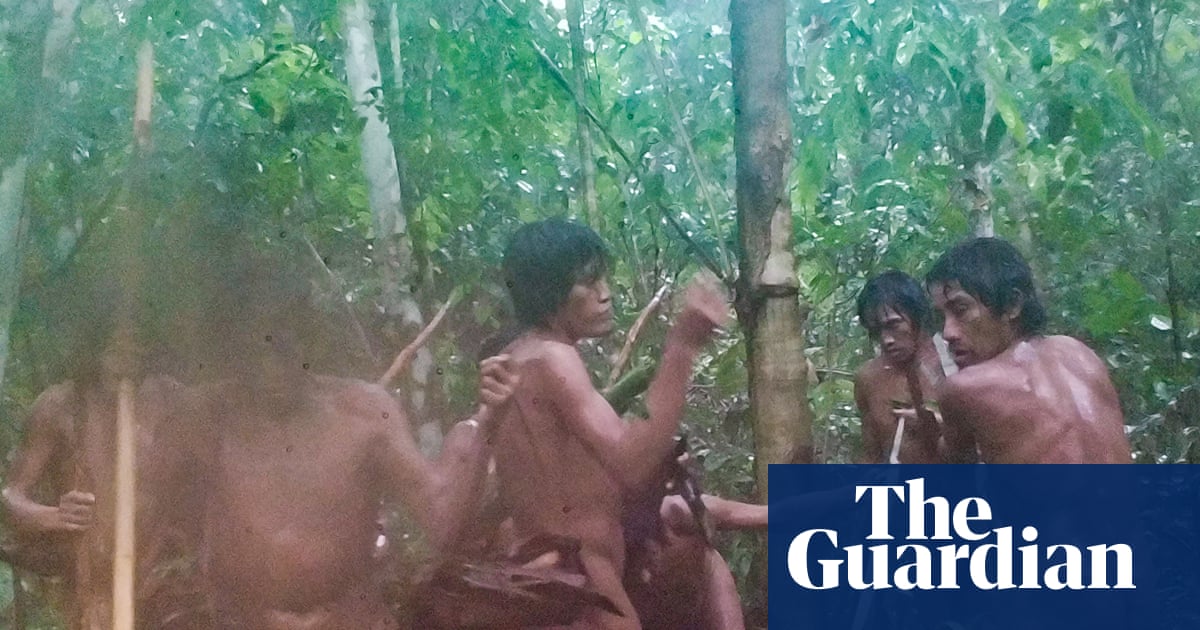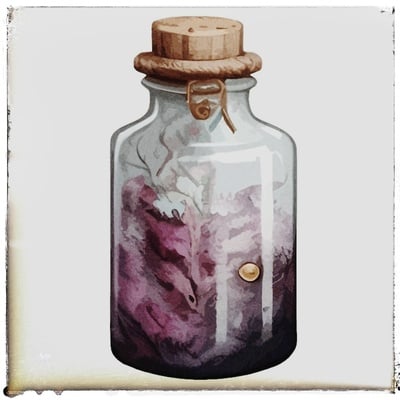Summary
Images from automatic cameras reveal the first detailed glimpse of the isolated Massaco community in the Brazilian Amazon, estimated to have doubled in size since the 1990s to 250 people.
Despite threats from ranchers, loggers, and miners, the Massaco remain resilient, using strategies like spikes to deter outsiders.
Brazil’s no-contact policy, initiated in 1987 to protect isolated Indigenous peoples from disease and exploitation, has led to population growth among similar groups.
However, chronic underfunding and illegal encroachments continue to threaten these communities and the forests they protect.
The article mentions tracking these people with satellite images. What a crazy contrast between worlds.
It’s similar to Star Trek when they observe underdeveloped (Pre-Warp) civilizations, but we’re the Enterprise.
And the illegal miners and loggers are the fucking Ferengi interfering with everything.
It’s honestly fascinating, and I don’t know if I envy these people or feel bad for them. Maybe a little bit of both.
Photographs Reveal First Glimpse of an Isolated Human Community on Planet Sol-3
Exclusive: Automated probes on Sol-3 uncover images of the Homo sapiens species, thriving despite environmental instability and self-inflicted pressures.
Report by Yal’Kor and Lin’aa of the Galactic Observation Collective
Stellar Date: 224.47 Cycle 12
Astounding images captured by automated observation drones on the third planet of the Sol system (designated Sol-3) provide the first close glimpses of a remarkable sentient species: Homo sapiens. This species, despite ecological degradation and internal conflict, appears to be flourishing in certain regions, defying expectations from prior analyses of planetary conditions.
The images, captured in the northern hemisphere, show small groups of these beings engaged in various activities, such as tool-making and communal gathering. While the Galactic Observation Collective (GOC) has long known about this species, their behaviors, language systems, and societal structures remain enigmatic due to strict adherence to the Non-Interference Directive. Sol-3 is home to diverse environments, yet the dominant species has exerted an unprecedented influence over their biosphere, causing widespread disruptions that puzzled galactic ecologists.
Isolated but Adaptive
Despite unrelenting pressures, including resource depletion, atmospheric instability, and widespread conflicts, evidence suggests that Homo sapiens populations are not merely surviving but expanding in some areas. The newly obtained images show settlements surrounded by improvised defenses, such as barriers constructed from the planet’s organic and synthetic materials. Their tools, though rudimentary by galactic standards, demonstrate ingenuity, with intricate designs suggesting a rich technological evolution.
The captured images also reveal that these beings possess varied physical traits, likely adaptations to diverse biomes on their planet. Their cultural practices, inferred from their structures and environmental modifications, indicate complex social hierarchies and communication methods.
The Danger of Contact
Attempts to study Homo sapiens from afar have consistently highlighted their volatile nature. Early reconnaissance missions documented extensive territorial disputes and destructive weaponry, making direct engagement perilous. Historical analyses indicate that this species has survived multiple self-inflicted calamities, including global conflicts and ecological collapse. Despite this, their ability to adapt has led to population growth, with estimates now surpassing 8 billion individuals.
The GOC has implemented indirect observation techniques, such as leaving small devices resembling local fauna to blend into their environment. These devices gather data on their daily activities while avoiding detection, as Homo sapiens have been known to dismantle unknown objects in both curiosity and fear.
Mysteries and Resemblances
“The Homo sapiens display intriguing parallels to earlier civilizations in galactic history,” says Senior Anthropologist Q’rin Na’sor, who has studied isolated species across multiple systems. “Their use of symbolic communication, evident in their written languages and artistic depictions, resembles early phases of the Aul’tari civilization, though much more fragmented.”
Despite their primitive technology, some have speculated that Homo sapiens may one day pose a risk to neighboring systems. Their ability to exploit planetary resources with minimal regard for long-term consequences has led to debates among the GOC about whether stricter containment measures are necessary.
Nomadic Growth and Expansion
Although many Homo sapiens are sedentary, others display nomadic behaviors, adapting to seasonal changes and resource availability. Recent satellite imaging revealed larger-than-expected agricultural zones and expansive megastructures, indicating coordinated efforts to sustain their growing population. Yet, their activities also contribute to the widespread destabilization of their planetary ecosystem, prompting concerns about the longevity of their civilization.
One notable trend among isolated human groups is their resilience in remote regions, where they utilize advanced strategies to deter intruders. Some settlements have erected barriers resembling ancient spike defenses, while others retreat deeper into inhospitable terrains, such as dense forests and arid deserts.
A Galactic Debate
The Non-Interference Directive, implemented to prevent disruptions in the natural development of sentient species, has sparked heated debate among scholars. Supporters argue that leaving Sol-3 untouched respects the species’ autonomy and prevents catastrophic cultural contamination. Opponents, however, point to the species’ unchecked environmental destruction as justification for intervention.
“Inaction could lead to the extinction of this fascinating species,” warns Xel’Tor, an advocate for targeted intervention. “However, intervention could provoke unintended consequences, including aggression or dependence.”
Interstellar Implications
The significance of Homo sapiens extends beyond mere curiosity. Their planet, rich in biodiversity, is a vital component of the Sol system’s fragile ecological balance. “Preserving the rights of this species is fundamental not only for their survival but for maintaining the stability of their planetary ecosystem,” notes environmental researcher Kala Ven-Tir.
Neighboring species within the sector have also expressed concern. Representatives of the Oth’rian Collective, whose observational station orbits a nearby gas giant, have proposed increasing patrols to ensure Homo sapiens remain confined to their planet.
The Future of Sol-3
While the fate of Homo sapiens remains uncertain, their capacity for resilience and innovation is undeniable. The GOC continues its efforts to monitor the species unobtrusively, leaving behind subtle markers of galactic presence to observe their responses.
“Homo sapiens remind us of our own distant past,” reflects Na’sor. “Their path is fraught with danger, yet filled with boundless potential. Whether they transcend their limitations or succumb to their flaws will determine their place in the galactic tapestry.”
For now, the inhabitants of Sol-3 remain a mystery—a vivid reminder of the diverse and unpredictable nature of sentient life in the universe.
This made me feel kind of hopeful for some reason. Also, nice foo fighters reference
There goes that neighborhood.
Deep within the cavernous warehouse lives a community of box stuffers gone feral due to Carl’s laxidasical management style and frequent forgetfulness when it comes to sending employees on breaks.
I find it interesting that they don’t wear clothes but shave their face. I wonder if most indigenous tribes shave.
I don’t think they’re shaved, it’s just a lot of the indigenous peoples of the Americas grow little-to-no facial hair to begin with.
Interesting. Why?
Heat maybe? Hair in general helps trap heat, and in the rainforest that’s not so helpful. Hot and humid I imagine you want that sweat to evaporate as fast as possible. All the airflow.
Why not? Natural selection might have pressured facial hair out or their ancestors that crossed the Baring Strait mostly had none and there was no selective pressure for facial hair.
First glimpse?
So uncontacted is a highly temporary state.
Personally I’m pretty divided on uncontacted tribes - I’d like everyone to be able to chose their own lifestyle including highly traditional lifestyles… but to make an informed decision you need to actually know what other options there are. Like - everyone raised in insular communities deserves a Rumspringa when they can experience other ways of life.
deleted by creator
Our culture sucks, their ignorance is a blessing in this case.
That’s fucking bullshit because they’re unable to make an informed decision. I’m not praising modern culture but there may be individuals living there that’d make a different choice if given the freedom.
Ignorance is never a strength.
Even the Amish know this and give young people a chance to leave the community to explore the outside world and decide for themselves what values they hold.
deleted by creator
I would never be sadder to know something. I reject the idea that ignorance is bliss.
Knowledge can hurt in the short term but knowing what’s possible is motivating.
They are more than welcome to contact their nearest modern day neighbors, they’ve chosen murder everytime instead.
deleted by creator
Usually armed with a canister of gasoline and a lighter :3c
Like really there’s a reason these tribes in the Amazon that kill white people on sight are the only ones whose way of life hasn’t been completely wiped out yet.
Keyword yet.
There won’t be an amazon jungle for very long, and they’ll be all out of places to live in unmolested.
Okay, but if you were even slightly informed on the situation they’re presented with or read the article, you would know that this Rumspringa you want to introduce to their society would kill them. They don’t have immunity to common illnesses like influenza and it has previously decimated about 85% of other indigenous peoples.
Not just that, they’re in contact. They have an agent of Funai that they are able to contact if they so choose. They’re offered metal gifts to prevent them from stealing metal from farms and putting themselves at risk. They’re aware of outside presence and actively lay wooden spike traps to dissuade people from seeking contact. Funai protocol is to only allow communication if it is initiated by the indigenous people.










